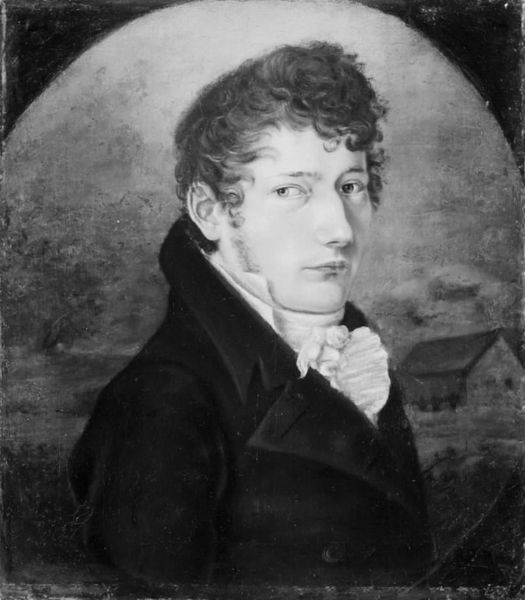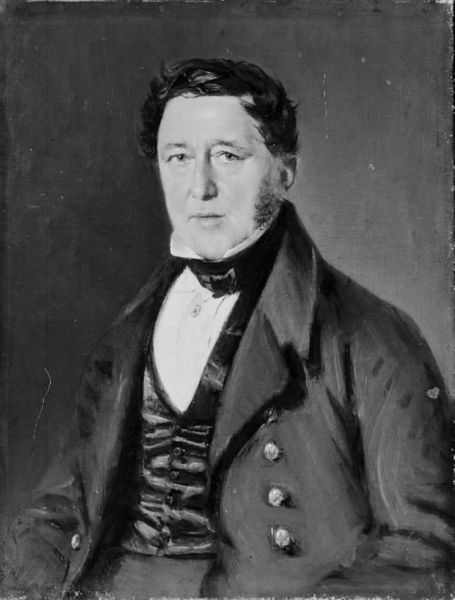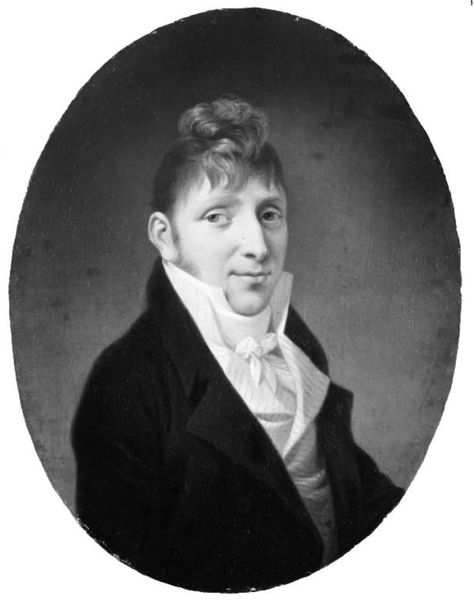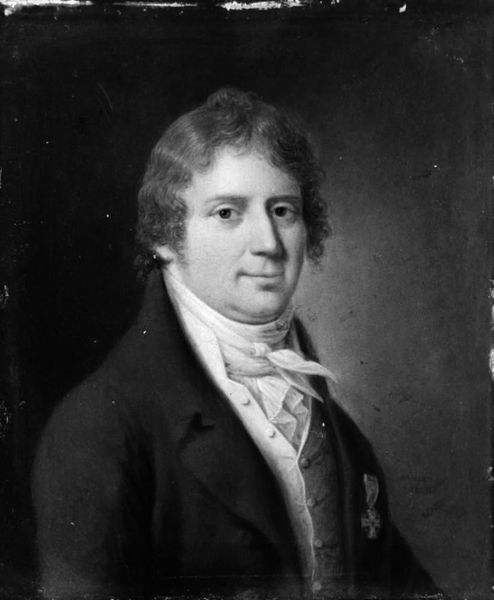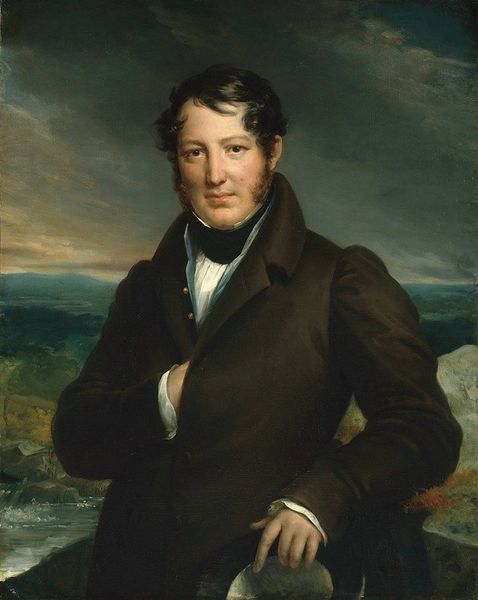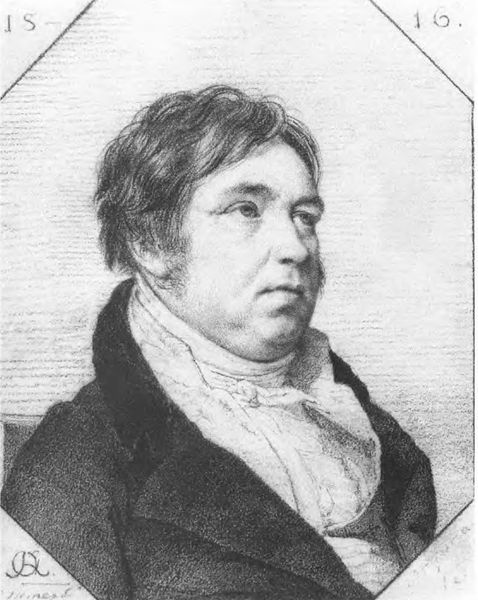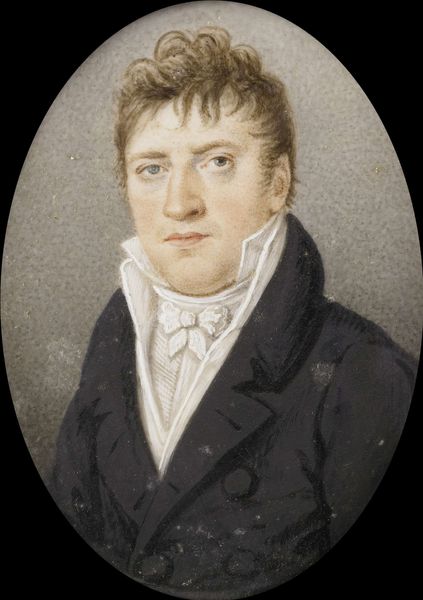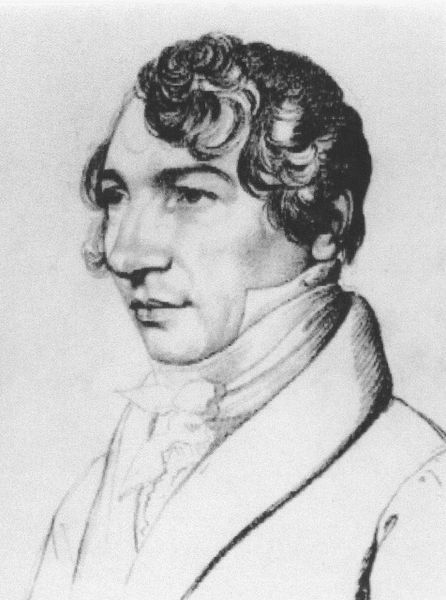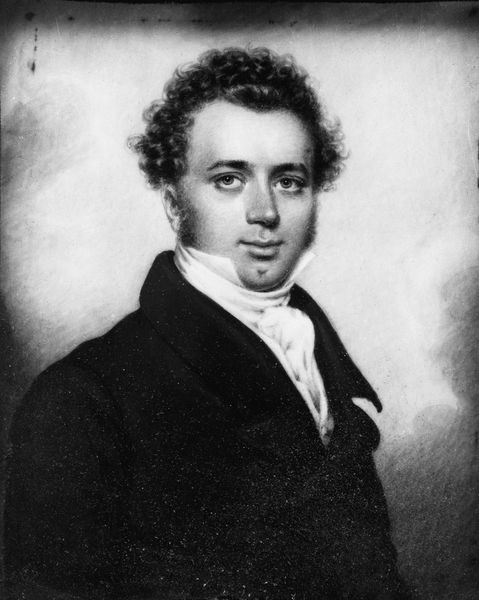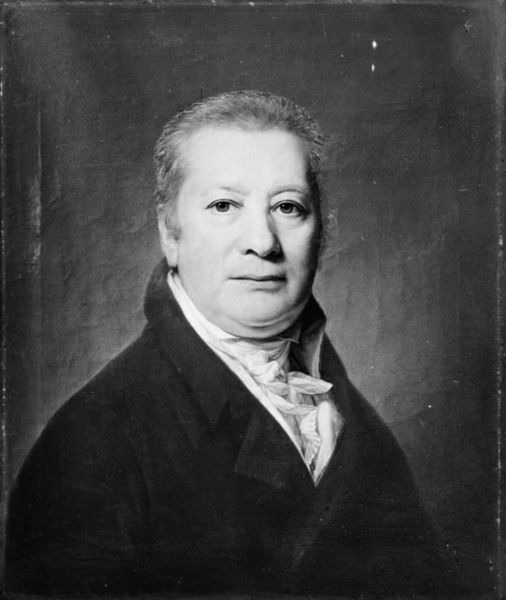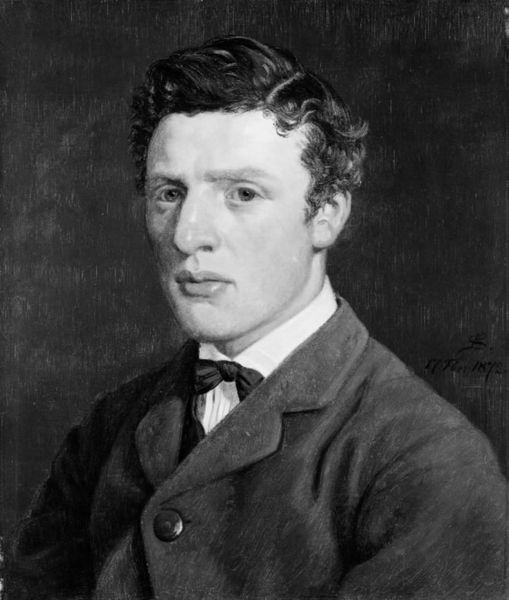
painting, canvas
#
portrait
#
low key portrait
#
portrait image
#
portrait
#
painting
#
portrait subject
#
figuration
#
canvas
#
male portrait
#
portrait reference
#
portrait head and shoulder
#
romanticism
#
facial portrait
#
fine art portrait
#
realism
#
digital portrait
Dimensions: 23 cm (height) x 19 cm (width) (Netto)
Curator: Welcome. We’re standing before Wilhelm Marstrand’s "Jacob Nansen," completed sometime between 1825 and 1873, an oil on canvas here at the SMK. Editor: The darkness of the painting immediately strikes me. The somber tones create an almost palpable sense of introspection, despite being a formal portrait. Curator: Indeed. This portrait is interesting because it embodies the shift toward a rising bourgeois class asserting their identity. Note the subject's dress and demeanor, hallmarks of the aspiring middle class of the time. It’s a fascinating display of how portraiture served as a tool for social climbing. Editor: Precisely, the construction of identity interests me. Marstrand meticulously rendered the texture of Nansen's jacket. It emphasizes material wealth, but consider also the act of commissioning such a work, further proof of their increasing economic power and access to culture. We can feel the material conditions being forged within society at the time, literally embedded in the brushstrokes. Curator: Good point. But look also at the way the face is illuminated. Marstrand is invoking the artistic tradition of the Dutch Masters and Rembrandt's light, an accepted visual language with roots in the aristocratic portraits of earlier periods. Editor: Sure, the form carries baggage from past class structures, but its function has radically shifted. The texture almost feels like a document recording changing production techniques or a new consumer class. The painting has social inscription as an artifact. Curator: Do you think viewers at the time fully grasped the social underpinnings embedded in it? Or were they simply interested in seeing their contemporaries rendered on canvas? Editor: That is the beauty of this work! That ambiguity and the layering of meanings speak volumes. Curator: Thank you. It's certainly a work that speaks to us differently depending on how we approach its historical context. Editor: Yes, considering the processes of production and material shifts adds critical layers of insight. Thank you for that exploration!
Comments
No comments
Be the first to comment and join the conversation on the ultimate creative platform.
